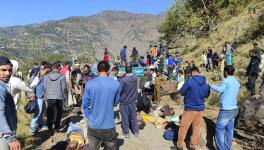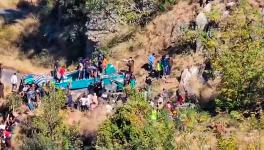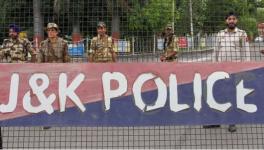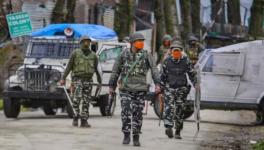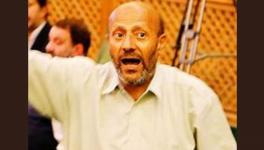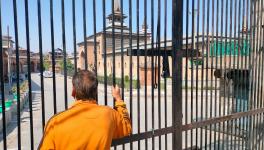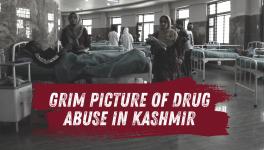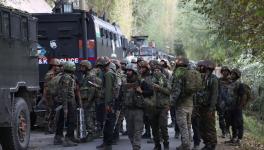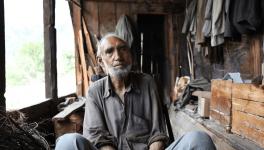New Amnesty International Report Calls for a “Complete Ban” on the Use of Pellet Guns in Kashmir
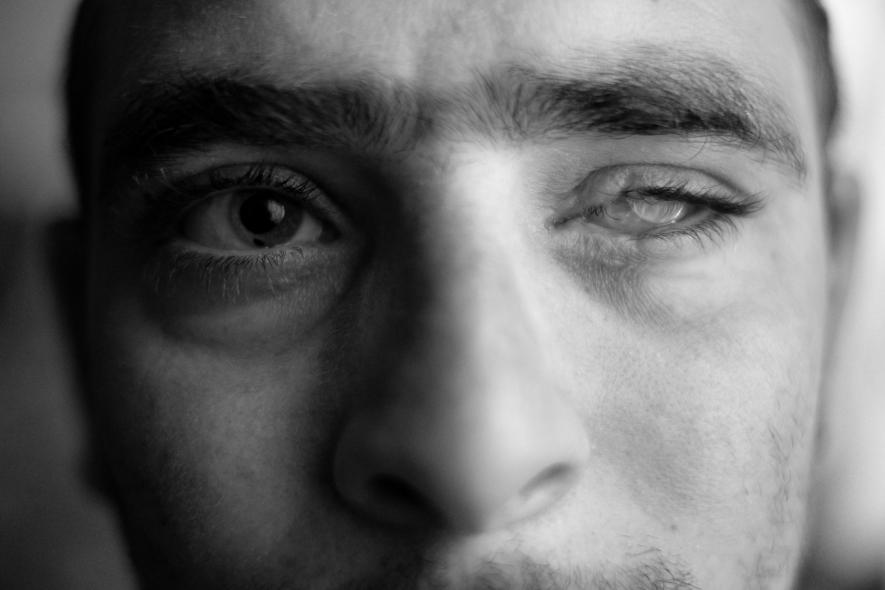
Danish Rajab Jhat (24), marketing executive from Srinagar, had to get his left eye removed due to pellets related injuries on 17 July 2016.
Amnesty International India called for a ‘complete ban’ on the use of pellet guns in Kashmir in their latest report titled “Losing Sight in Kashmir: The Impact of Pellet-Firing Shotguns” which was released on Wednesday. The report depicts the plight of 88 victims of pellet guns in Kashmir whose eyesight was damaged in one or both eyes by metal pellets fired from pump-action shotguns used by the Jammu and Kashmir Police (JKP) and Central Reserve Police Force (CRPF) between the year 2014 and 2017.
The report says pellet-firing shotguns, which have been responsible for blinding, killing and traumatizing hundreds of people in Kashmir, “must be immediately banned.” The pump-action shotguns, as per the report, have been used by forces in Jammu and Kashmir since at least 2010. The report says the use of shotguns in Kashmir has “blinded hundreds and killed at least 14 people since July 2016.”
“School going boys and girls have lost vision in one or both eyes, and have difficulty reading, playing with their friends, or watching cartoons,” the report says, adding that college students have had to give up their dreams of pursuing higher education. “Young men and primary breadwinners of families say that they cannot earn a living anymore, that they are now a liability for their families.”
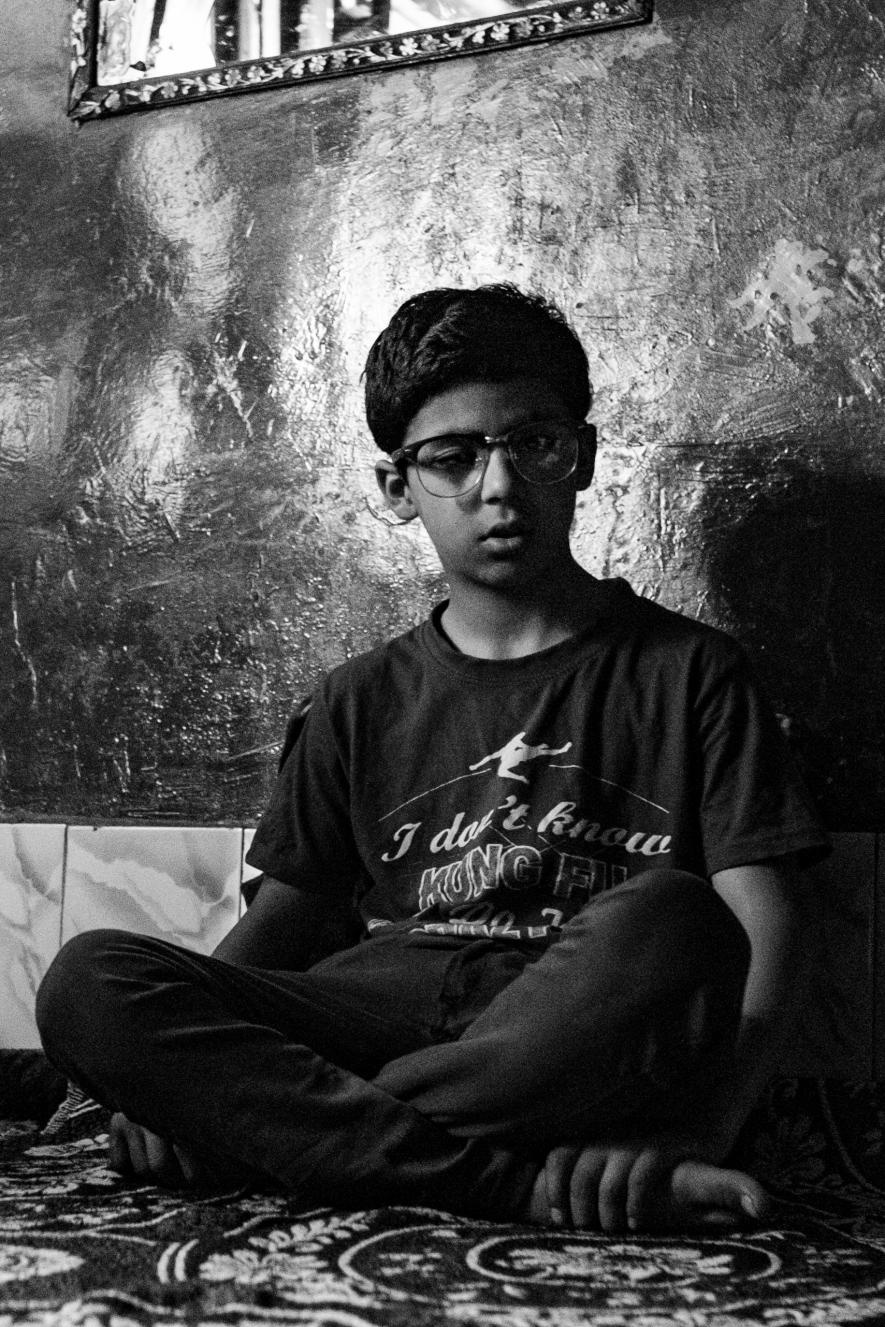
Asif Ahmad Sheikh (9 years old) class 5 student from Anantag, lost the vision in right eye on 21st July 2016.
The report reveals that several people have not regained their eyesight despite going through repeated surgeries, and that they’re “spending considerable amounts of time on medical treatment. Some still have pellets inside their eyes, because it is medically risky to remove them.”
The report features large sized, black and white photos of pellet victims, including those of teenagers and young men in their early 20s, along with their details and brief thoughts, in quotes, which depict their pain.
The report also recommends initiation of an “independent and impartial civilian criminal investigation into all incidents where the use of pellet firing shotguns led to deaths or serious injuries to establish whether arbitrary or excessive force was used, and where sufficient evidence is found, prosecute those suspected of responsibility in civilian courts.”
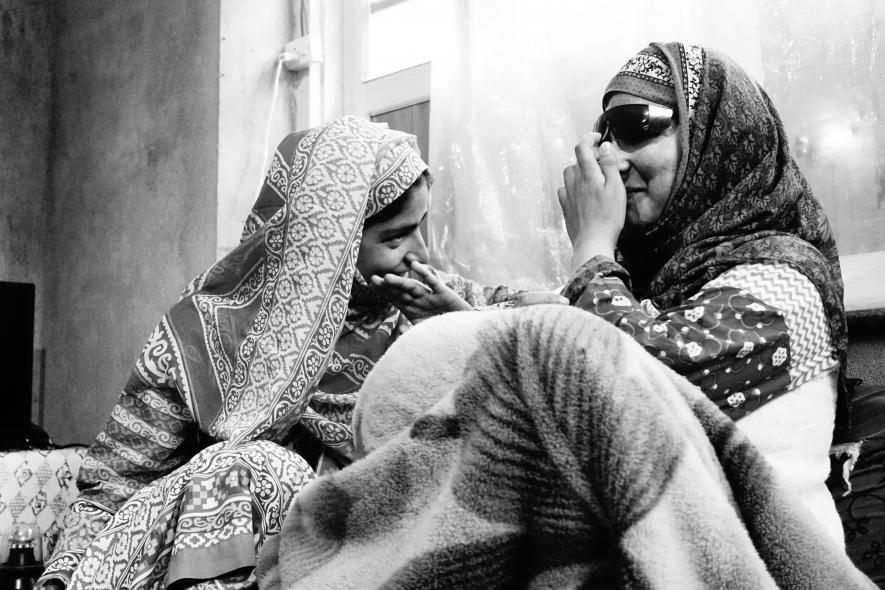
Insha Mushtaq (15), class 9 student from Shopian, lost vision in both eyes on 11 July 2016.
The report further recommends full compensation, to be provided by government of India and the state government, for the victims of pellets guns in Kashmir. “Provide full reparation in line with the international standards to those who have been injured by pellet-firing shotguns, and to the families of those killed,” the report recommends at the end, adding that this must be “adequate compensation and rehabilitation, including any medical and psychological care that may be needed.”
The report also recommends the central and state government to provide “relevant training on crowd control measures and the use of force and firearms to security force personnel of the central and state governments, as laid out in the UN Basic Principles on the use of Force and Firearms by the Law Enforcement officials and UN Code of Conduct for Law Enforcement Officials.”
“Authorities claim the pellet shotgun is not lethal, but the injuries and deaths caused by this cruel weapon bear testimony to how dangerous, inaccurate and indiscriminate it is,” Aakar Patel, Executive Director at Amnesty International India said while releasing the report. “There is no proper way to use pellet-firing shotguns. It is irresponsible of authorities to continue the use of these shotguns despite being aware of the damage they do.”
The report also reveals some information obtained through an RTI filed by AI which shows that out of 648 people treated for injuries in government hospitals of north Kashmir’s Kupwara district in 2016, “16 people were from Jammu and Kashmir police who suffered various forms of injuries caused by pellets.” When AI wrote to the J&K police and CRPF seeking details on whether any of their personnel had been injured by pellet shotguns, no responses were received.
Traumatized and living in the dark
Zahoor Wani, Senior Campaigner at Amnesty International India and lead researcher of the report, said pellet gun victims in Kashmir are facing serious physical and mental health issues, which includes physical pain, memory loss, and hypertension. “Many of the pellet victims we met while researching for the report are young students who had to give up their studies as they couldn’t focus on their studies due to their eye injuries,” said Wani, adding that only in one case they found the victim family having filed an FIR, while the rest of the victims were unable to pursue their cases, many of them unaware of who hit them with pellet shotguns which resulted in their fatal eye injuries. Wani said during their research they also found many cases where pellet gun victims were as old as 9 and 10 year olds, including 14 cases which involved young girls who were hit by pellet guns inside or close to their homes.
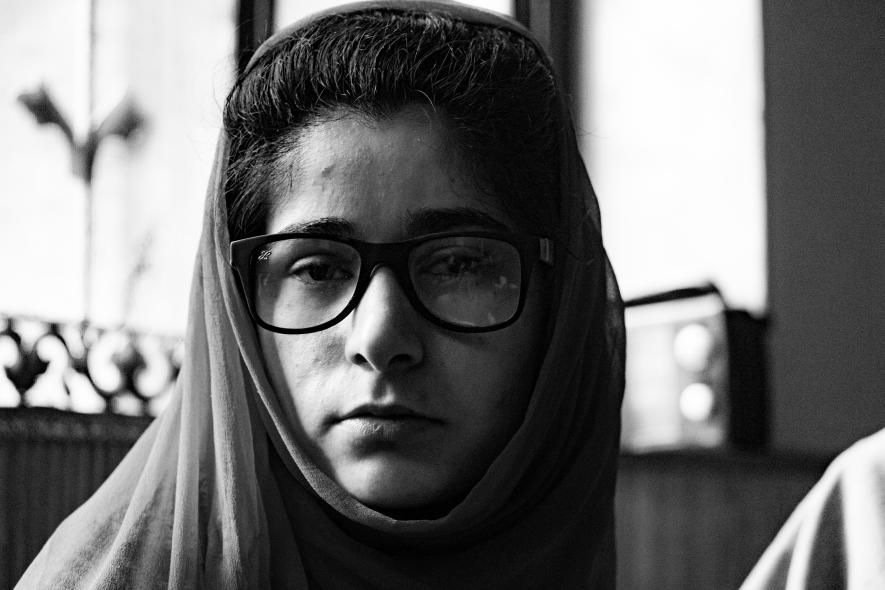
Shabroza Mir (19), class 10 student from Pulwama, lost vision in her left eye on 31 October 2016.
Shabroza Mir, a 19-year-old student and one of the pellet gun victims who featured in the report, talked about her condition while briefly addressing the audience at the event. She said she was preparing for her class 10th exams when she was hit by pellets in her left eye outside her home in Pulwama district on October 31 last year. She said the pellet injury has psychologically affected her. She is unable to read and focus on her studies. “When I look down to read something even now,” she said. “It pains me and I’ve to stop reading.”
Manzoor Ahmad Dar, a 22-year-old baker from Pulwama. who also addressed the audience after the release of the report, said he’d to close his shop and stop working following his doctor’s advice as his right eye suffered partial loss of sight after pellets were fired at him in October last year. “My father died long ago after which I was supporting my family,” he said. “But after I was hit by pellets, I had to close my shop and I’m unable to earn and support my family now,” he said. “I’m doomed.”
Farooq Ahmad Malla, a 27-year-old box maker from north Kashmir’s Bandipora district, lost vision in both his eyes after he was hit by pellets in March last year. “The pellets have turned everything black – my ambitions, my dreams, my whole life,” his quote beneath his black and white photo reads in one of the pages of the report. “It is painful to hear that more and more people are being pushed into this dark world by these pellets.”
(Majid Maqbool is a journalist and editor based in Srinagar, Kashmir)
Disclaimer: The views expressed here are the author's personal views, and do not necessarily represent the views of Newsclick.
Get the latest reports & analysis with people's perspective on Protests, movements & deep analytical videos, discussions of the current affairs in your Telegram app. Subscribe to NewsClick's Telegram channel & get Real-Time updates on stories, as they get published on our website.









